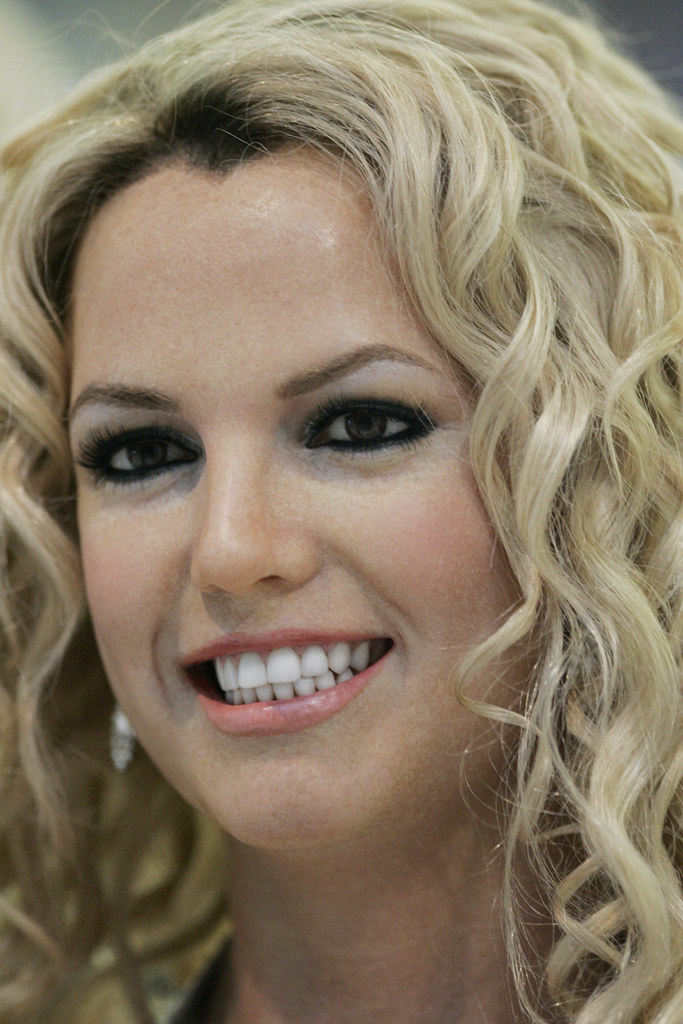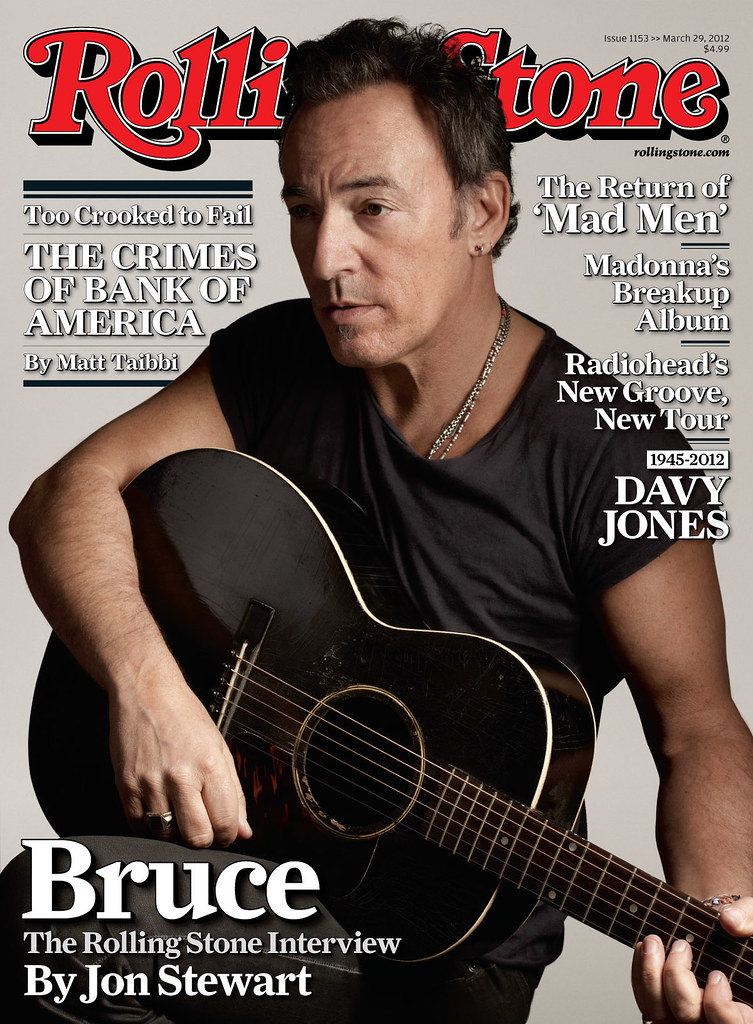
The name Bruce Springsteen conjures images of raw American spirit, tireless live performances, and songs that weave the dreams and struggles of ordinary people into timeless anthems. For decades, “The Boss” has not merely sung about the American experience; he has embodied it, transforming the blue-collar realities of New Jersey’s shores into a universal language of hope, defiance, and enduring heart.
This exploration aims to illuminate the defining chapters of Springsteen’s extraordinary evolution, tracing the pivotal moments, collaborations, and internal battles that shaped his sound and message. We journey from the nascent stirrings of musical ambition to his hard-won ascent as a global icon, revealing how a young man from Freehold became an authoritative voice for the working class, all while maintaining an artistic integrity that remains fiercely independent.
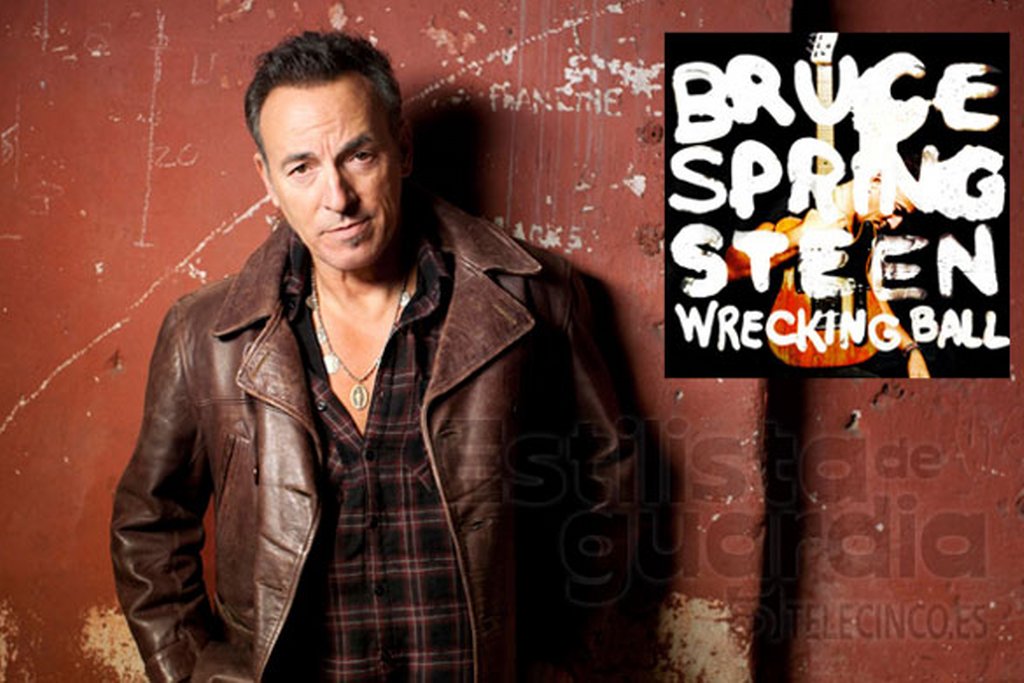
1. **The Formative Years: From Asbury Park’s Elks Lodge to Greenwich Village’s Cafe Wha? (1964-1972)**
Bruce Springsteen’s musical journey began in 1964, ignited by The Beatles’ televised appearances on The Ed Sullivan Show. Inspired, he bought his first guitar for $18.95, playing with the Rogues at local venues like the Elks Lodge in Freehold. His mother later purchased him a $60 Kent guitar, an act he memorialized in “The Wish,” marking the foundational stirrings of his legendary career.
In 1965, he became lead guitarist and singer for the Castiles, recording two original songs and playing venues including Cafe Wha? in Greenwich Village. Marion Vinyard, a band sponsor, “believed the young Springsteen when he promised he would make it big.” Following brief stints with Earth, he performed with Child, later renamed Steel Mill, from 1969 to 1971. This group, featuring Danny Federici and Steven Van Zandt, garnered a cult following across the Jersey Shore and in cities like Richmond, Nashville, and California.
Music critic Philip Elwood, reviewing Steel Mill in January 1970, declared he had “never been so overwhelmed by a totally unknown talent,” praising their “cohesive musicality” and calling Springsteen “a most impressive composer.” As Springsteen honed his unique style through bands like Dr. Zoom & the Sonic Boom, his songwriting became notably prolific. His future label noted he had “more words in some individual songs than other artists had in whole albums.”
This prodigious talent attracted managers Mike Appel and Jim Cretecos, who arranged a pivotal audition with John Hammond at Columbia Records in May 1972. This meeting with the legendary talent scout would prove the critical juncture, irrevocably altering the trajectory of Springsteen’s destiny from local talent to a national prospect.
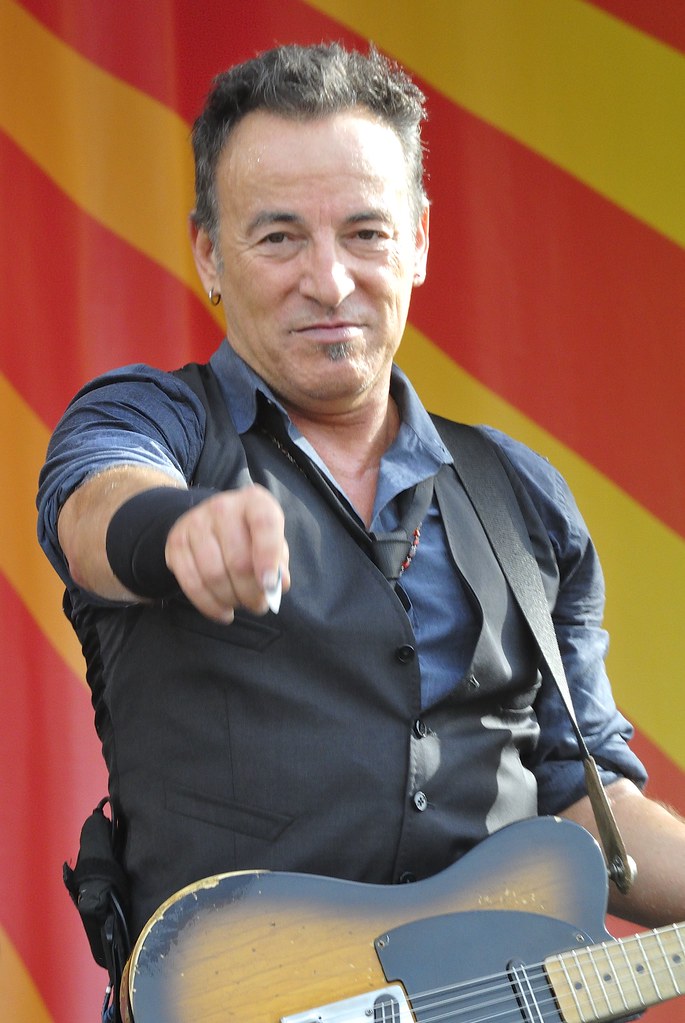
2. **The Columbia Calling: John Hammond, Critical Acclaim, and the Birth of the E Street Band (1972-1974)**
The year 1972 marked Bruce Springsteen’s official signing to Columbia Records by John Hammond, who signed Bob Dylan a decade prior. His debut album, “Greetings from Asbury Park, N.J.” (January 1973), instantly made him a critical favorite. Critics, captivated by his “lyrical poeticism and folk rock-rooted music,” drew initial comparisons to Dylan, recognizing a potent new voice.
Crawdaddy magazine was an early, fervent champion. Editor Peter Knobler, in a March 1973 profile, wrote: “He sings with a freshness and urgency I haven’t heard since I was rocked by ‘Like a Rolling Stone’.” Knobler profiled him three times, and Springsteen and the E Street Band later performed privately at the magazine’s 10th Anniversary Party in 1976, acknowledging their crucial support.
Eleven months after his debut, “The Wild, the Innocent & the E Street Shuffle” (November 1973) also received critical acclaim but limited commercial success. Springsteen’s songs grew “grander in form and scope,” infused with a “less folksy, more rhythm and blues vibe” from the developing E Street Band. His lyrics began romanticizing “teenage street life,” yielding fan favorites like “4th of July, Asbury Park (Sandy)” and “Rosalita (Come Out Tonight).”
The Stone Pony, opening in February 1974 in Asbury Park, became a regular haunt for Springsteen. It later became “an integral part of music history for decades,” and years later, he would meet Patti Scialfa there. After seeing Springsteen perform in 1974, critic Jon Landau famously declared he “saw rock and roll future, and its name is Bruce Springsteen,” a prophetic statement anticipating the monumental breakthrough on the horizon.
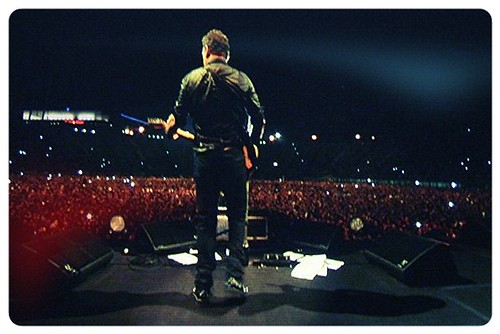
3. **The ‘Wall of Sound’ Breakthrough: ‘Born to Run’ and the Media Backlash (1975-1983)**1975 was Bruce Springsteen’s crucible, with Jon Landau co-producing “Born to Run”—a “last-ditch effort at a commercially viable record.” Springsteen pursued a majestic “Wall of Sound” production, leading to an arduous 14-month recording process for the album, with six months dedicated solely to the title track. This intense period saw E Street Band changes, as Roy Bittan and Max Weinberg joined, cementing the lineup.
Springsteen grappled with “anger and frustration,” struggling to articulate “sounds in [his] head” to producers with “opposing views.” Steven Van Zandt’s ingenuity during “Tenth Avenue Freeze-Out,” conceiving horn arrangements on the spot, led to his official inclusion in the E Street Band. The final mixing continued right up to the August release, with Springsteen famously rejecting initial acetates, even throwing one into a hotel pool, before approving the definitive version.
“Born to Run” was a “breakthrough album” that “catapulted Springsteen to worldwide fame,” peaking at No. 3 on Billboard and going seven times platinum. Its singles charted successfully. However, this sudden fame brought an unforeseen media backlash. In October 1975, Springsteen’s unprecedented appearance on both Newsweek and Time covers sparked questions about his authenticity. “Hurt by the backlash,” Springsteen “disliked his newfound attention,” even tearing down promotional posters in London.
A protracted legal battle with manager Mike Appel kept Springsteen out of the studio for nearly a year, during which he maintained the E Street Band through touring. After settling in May 1977, he recorded “Darkness on the Edge of Town.” This album offered a “rawer hard rock sound,” focusing on “ill-fortuned people who fight back against overwhelming odds.” While selling fewer copies, it remained on the Billboard chart for 167 weeks, and its tour solidified the E Street Band as “one of the most exciting live acts in rock ‘n’ roll.”
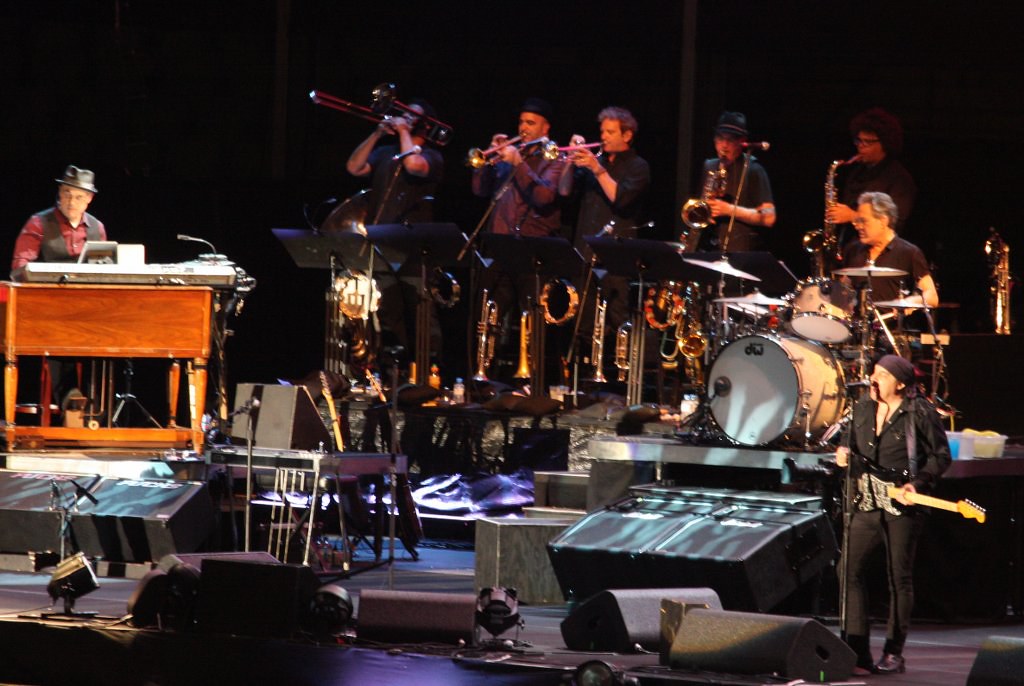
4. **The Songwriter’s Craft and the Rise of “The River” (1976-1983)**By the late 1970s, Bruce Springsteen gained renown as a prolific songwriter whose material could furnish hits for other artists. Manfred Mann’s Earth Band scored a U.S. No. 1 pop hit with “Blinded by the Light” in 1977. Patti Smith reached No. 13 with her version of Springsteen’s unreleased “Because the Night” (1978), and The Pointer Sisters hit No. 2 with “Fire” (1979). He also contributed several compositions to Southside Johnny and the Asbury Jukes.
Springsteen’s social consciousness publicly emerged in September 1979, supporting the Musicians United for Safe Energy at Madison Square Garden. These performances, which premiered new songs, marked his “first tentative dip into political involvement.” The subsequent “No Nukes” live album and film offered “the first official recordings and footage of Springsteen’s fabled live act.”
His fifth album, “The River,” spanning 18 months of recording, was an ambitious 20-track double album aiming to capture the E Street Band’s live energy, blending “party songs and introspective ballads.” Released in October 1980, “The River” became Springsteen’s “biggest and fastest-selling album yet,” topping the U.S. Billboard chart. “Hungry Heart” became his “first top ten single as a performer,” reaching number five, while “Fade Away” reached No. 20.
“The River” also subtly “foreshadowed the direction of Springsteen’s next record,” the minimalist, folk-inspired solo effort “Nebraska” (September 1982). Recorded as raw home demos, Springsteen bravely released them as is, creating a stark chronicle of “dark hardships felt by everyday blue-collar workers” and “bleak tales of criminals, cops, and gang wars.” Despite minimal sales, it reached No. 3 on the Billboard chart, praised by critics as a “brave artistic statement.”
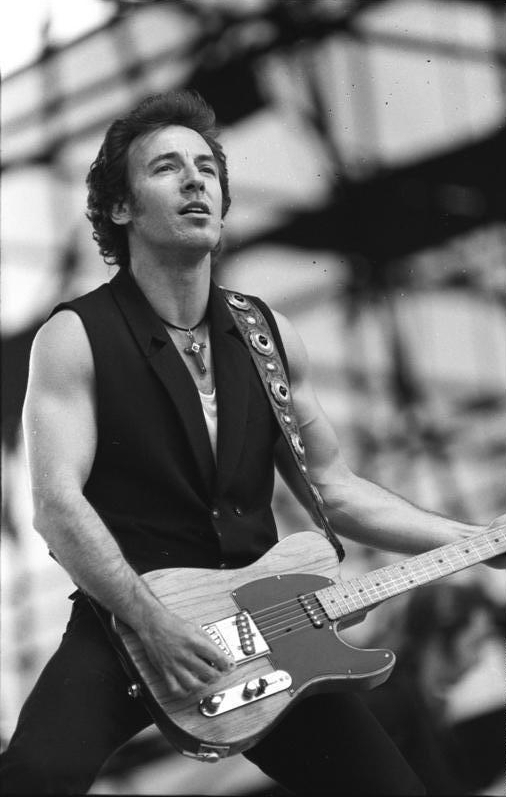

5. **The Global Phenomenon: ‘Born in the U.S.A.’, Political Misinterpretations, and Pop Culture Dominance (1984-1986)**
1984 brought “Born in the U.S.A.,” Springsteen’s most commercially colossal work, selling 30 million worldwide and becoming “one of the best-selling albums of all time,” with seven top-ten singles. The title track, a “bitter commentary on the treatment of Vietnam veterans,” was often misinterpreted as purely patriotic due to its anthemic sound. This duality gave it immense “political impact,” advocating for “the rights of the common working-class man.”
The song’s misinterpretation led to significant folklore during the 1984 presidential campaign. After a conservative columnist praised Springsteen, President Ronald Reagan referenced the song at a rally. Springsteen directly responded at a Pittsburgh concert: “I don’t think it was the Nebraska album. I don’t think he’s been listening to this one,” before playing “Johnny 99,” with its “allusions to closing factories and criminals.”
“Dancing in the Dark” was the biggest single, peaking at No. 2, its video launching Courteney Cox’s career. Springsteen also wrote “Cover Me” for Donna Summer, but kept it, writing “Protection” for her instead. Videos were directed by Brian De Palma and John Sayles. His participation in “We Are the World” (1985) and his live cover of “Trapped” (No. 1 on Billboard Top Rock Tracks) further cemented his global visibility.
This period marked “the height of Springsteen’s visibility in popular culture and the broadest audience he would ever reach,” amplified by Arthur Baker’s dance mixes. From June 15 to August 10, 1985, “all seven of his albums appeared on the UK Albums Chart,” “the first time an artist had charted their entire back catalogue simultaneously.” This demonstrated his pervasive influence and the depth of his discography.
The “Live/1975–85” box set (late 1986) became “the first box set to debut at No. 1 on the U.S. album charts” and remains “one of the most commercially successful live albums of all time,” selling 13 million units. This era also saw the launch of several Springsteen fanzines, including Backstreets magazine. The years 1984-1986 transformed Bruce Springsteen into an enduring cultural phenomenon, a powerful voice, and a testament to authentic American storytelling.
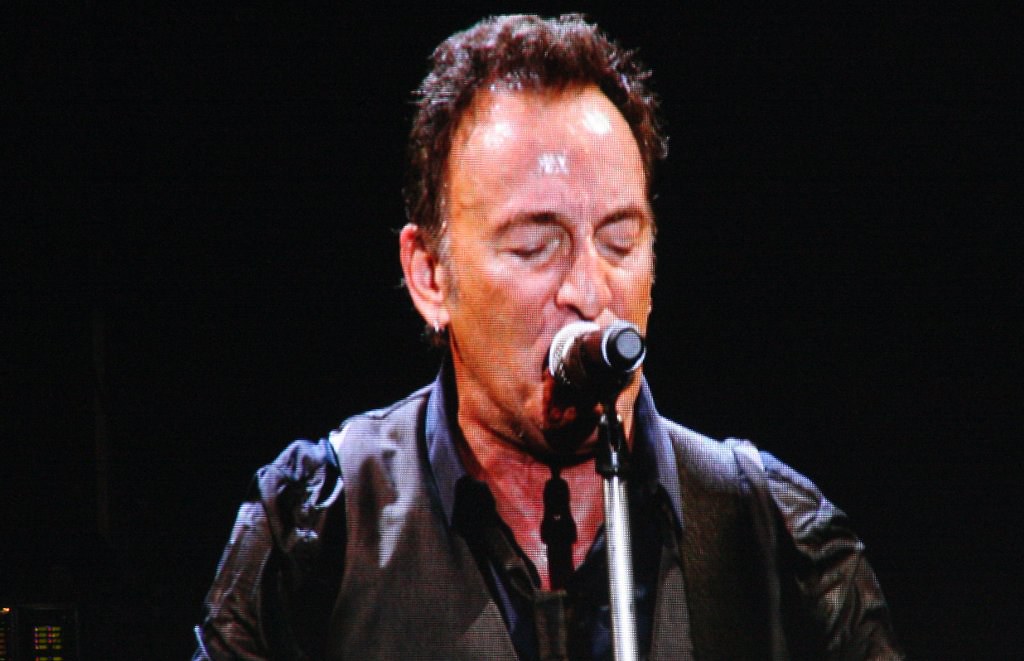
6. **The Contemplative Turn: ‘Tunnel of Love,’ East Berlin, and the E Street Band’s First Hiatus (1987-1991)**
Following the unparalleled global explosion of *Born in the U.S.A.*, Bruce Springsteen embarked on a different artistic path, delivering the far more introspective and sedate album, *Tunnel of Love*, in October 1987. This collection represented a profound, mature reflection on the multifaceted nature of love — its discovery, its loss, and its sometimes squandered potential. Rather than the full-throttle E Street Band sound, this record thoughtfully integrated the band only selectively, allowing the thematic depth to shine through. While not matching the colossal sales of its predecessor, it achieved significant commercial success, reaching the No. 1 spot on the Billboard 200, signaling that Springsteen’s audience was ready to follow him into more personal territory.
Amidst this shift, Springsteen’s influence extended beyond the confines of album charts and concert halls. On July 19, 1988, he played a monumental concert in East Germany that drew an astonishing 300,000 spectators. This event, later described by journalist Erik Kirschbaum in his 2013 book *Rocking the Wall* as “the most important rock concert ever, anywhere,” was originally conceived by the Socialist Unity Party’s youth wing. Their intention was to appease the youth of East Germany, who yearned for greater freedoms and the captivating sounds of Western popular music. However, Kirschbaum contends that the concert’s resounding success inadvertently ignited opposition to the regime, playing a tangible role in catalyzing the events that led to the fall of the Berlin Wall the following year.
This period also saw Springsteen deepen his commitment to global causes. Later in 1988, he spearheaded the worldwide Human Rights Now! tour, a powerful initiative benefiting Amnesty International that brought his message of social justice to an even broader international audience. It was a time of immense personal and professional reevaluation, culminating in a significant, if temporary, shift in his artistic structure. In October 1989, a decision was made to dissolve the beloved E Street Band, marking the end of an era and paving the way for Springsteen’s next phase of creative exploration.
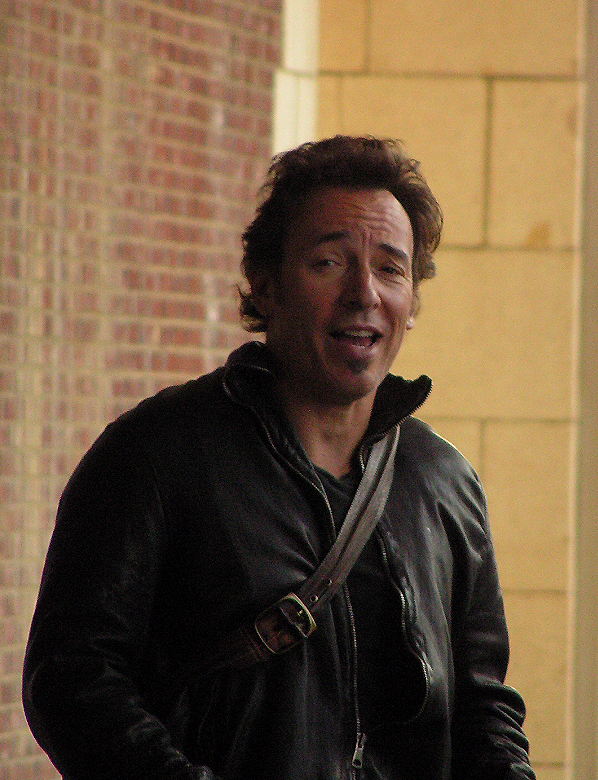
7. **Solo Explorations, Hollywood Accolades, and the Folk Revival (1992-1998)**The early 1990s presented a distinct departure for Bruce Springsteen, as he made the bold move to Los Angeles and began working with session musicians, a choice that risked accusations from some fans of “going Hollywood.” In 1992, he released two albums simultaneously, *Human Touch* and *Lucky Town*, showcasing his continued prolificacy but also a conscious move away from the E Street Band’s signature sound. This period of artistic experimentation, however, was not without its challenges. An electric performance for the acoustic *MTV Unplugged* television program, later released as *In Concert/MTV Plugged*, was met with a lukewarm reception, solidifying a degree of fan dissatisfaction with his new direction.
Despite some artistic missteps, the decade brought significant accolades, particularly in the realm of film. In 1994, Springsteen earned a coveted Academy Award for his poignant song “Streets of Philadelphia,” which served as a powerful centerpiece for the film *Philadelphia*. The song’s accompanying video was particularly innovative, featuring Springsteen’s actual vocal performance recorded using a hidden microphone over a prerecorded instrumental track, a technique previously refined in his “Brilliant Disguise” video. This Oscar win reaffirmed his stature as a songwriter capable of deeply moving an audience across different mediums.
In 1995, a temporary reunion with the E Street Band occurred for the recording of a few new songs destined for his first *Greatest Hits* album. This recording session was meticulously chronicled in the documentary *Blood Brothers*, offering fans a glimpse into the enduring camaraderie of the group. This reunion was followed by a single, intimate show at Tramps in New York City. Later that year, Springsteen released his second folk album, *The Ghost of Tom Joad*, a thematically rich work inspired by John Steinbeck’s *The Grapes of Wrath* and Dale Maharidge and Michael Williamson’s book *Journey to Nowhere: The Saga of the New Underclass*.
*The Ghost of Tom Joad* was a stark, politically charged album, offering minimal melody and twangy vocals. While generally less enthusiastically received than the similarly themed *Nebraska*, it was praised by some for its courageous attempt to give a voice to marginalized immigrants and others often unheard in American culture. The album was supported by a lengthy, worldwide, small-venue solo acoustic *Ghost of Tom Joad Tour*, where Springsteen often presented his older songs in drastically reshaped acoustic forms. During these intimate performances, he famously had to remind audiences to “shut the up” and refrain from clapping, ensuring the delicate, contemplative atmosphere of the new material was respected. Following this extensive tour, Springsteen chose to move from California back to his roots in New Jersey with his family.
His artistic output in this period also included the sprawling, four-disc box set of outtakes, *Tracks*, released in 1998. Looking back on this era, Springsteen himself would candidly acknowledge that the 1990s represented a musically “lost period” for him, admitting, “I didn’t do a lot of work. Some people would say I didn’t do my best work.” This honest reflection underscores a decade of searching and evolving, laying groundwork for the powerful resurgence that was to come.
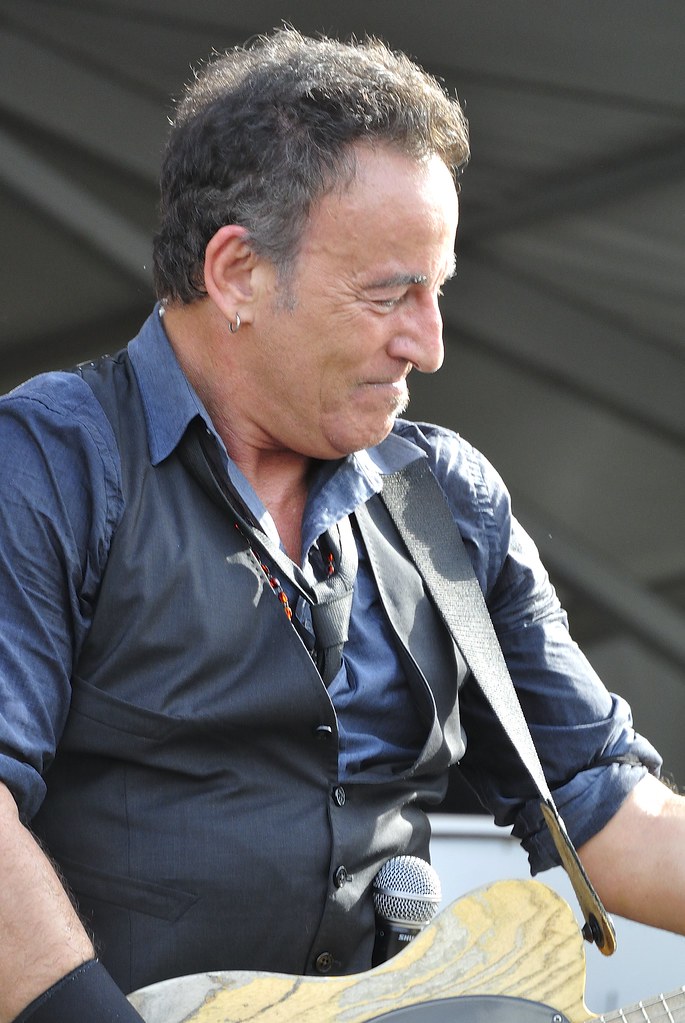
8. **The E Street Reunion, Post-9/11 Resonance, and Continued Activism (1999-2007)**The turn of the millennium marked a glorious return to form, as Bruce Springsteen was inducted into the Rock and Roll Hall of Fame in 1999 by Bono, a favor he would reciprocate in 2005. More significantly for fans, 1999 also witnessed the full reunion of Springsteen and the E Street Band, embarking on an extensive *Reunion Tour* that spanned over a year. This triumphant return was highlighted by a record-setting, 15-show sold-out engagement at the Continental Airlines Arena in East Rutherford, New Jersey, followed by a ten-night, sold-out run at New York City’s iconic Madison Square Garden, proving their enduring power as a live act.
During these reunion shows, a new song, “American Skin (41 Shots),” addressing the controversial police shooting of Amadou Diallo, stirred significant public discussion. This demonstrated Springsteen’s unwavering commitment to addressing pressing social issues through his music. The profound impact of their reunion resonated even more deeply with the release of *The Rising* in 2002, his first studio effort with the full E Street Band in 18 years. Produced by Brendan O’Brien, the album served largely as a poignant reflection on the September 11 attacks, becoming both a critical and popular success.
*The Rising* saw its title track gain significant radio airplay across multiple formats, and the album itself became Springsteen’s best-selling collection of new material in 15 years. The accompanying *Rising Tour* commenced with an early-morning appearance in Asbury Park on *The Today Show*, launching the band into a barnstorming series of arena stands across the U.S. and Europe, including an unprecedented 10-night residency at Giants Stadium in New Jersey. The album’s impact was recognized at the 45th Annual Grammy Awards in 2003, where *The Rising* secured the Grammy for Best Rock Album and nominations for Album of the Year. The title track also garnered Grammys for Best Rock Song and Best Male Rock Vocal Performance, alongside a nomination for Song of the Year. A memorable moment at the ceremony saw Springsteen perform The Clash’s “London Calling” with Elvis Costello, Dave Grohl, Steven Van Zandt, and Tony Kanal in a heartfelt tribute to Joe Strummer. His activism continued in 2004, as he and the E Street Band participated in the Vote for Change tour alongside other prominent musicians.
Springsteen’s artistic exploration continued in 2005 with the release of the solo record *Devils & Dust*. This album presented a low-key, mostly acoustic sound, echoing the intimate veins of *Nebraska* and *The Ghost of Tom Joad*. Some of its material, written almost a decade earlier, had been performed but remained unreleased until then. The title track poignantly explored an ordinary soldier’s feelings and fears during the Iraq War, and the album topped charts in ten countries. The accompanying solo *Devils & Dust Tour* saw him play both small and large venues, though attendance was mixed in some regions outside Europe. In April 2006, he unveiled *We Shall Overcome: The Seeger Sessions*, an American roots music project built around a vibrant folk sound treatment of 15 songs popularized by the radical musical activism of Pete Seeger. An 18-strong ensemble of musicians, dubbed the Seeger Sessions Band, supported the tour, which proved immensely popular in Europe, selling out every date and garnering excellent reviews, including its opening act in New Orleans following Hurricane Katrina. However, some U.S. shows reportedly suffered from sparse attendance.
The year 2007 brought *Magic*, an album recorded with the E Street Band, featuring ten new Springsteen songs, along with “Long Walk Home” (previously performed with the Sessions band) and a hidden track, “Terry’s Song,” a tribute to his long-time assistant Terry Magovern, who had passed away in July of that year. *Magic* debuted at No. 1 in the U.S., Ireland, and the UK, further cementing his enduring appeal. The supporting *Magic Tour*, his first with the E Street Band since 2003, tragically marked the final tour for longtime E Street member Danny Federici, who passed away in 2008, a profound loss for the band and its legion of fans.
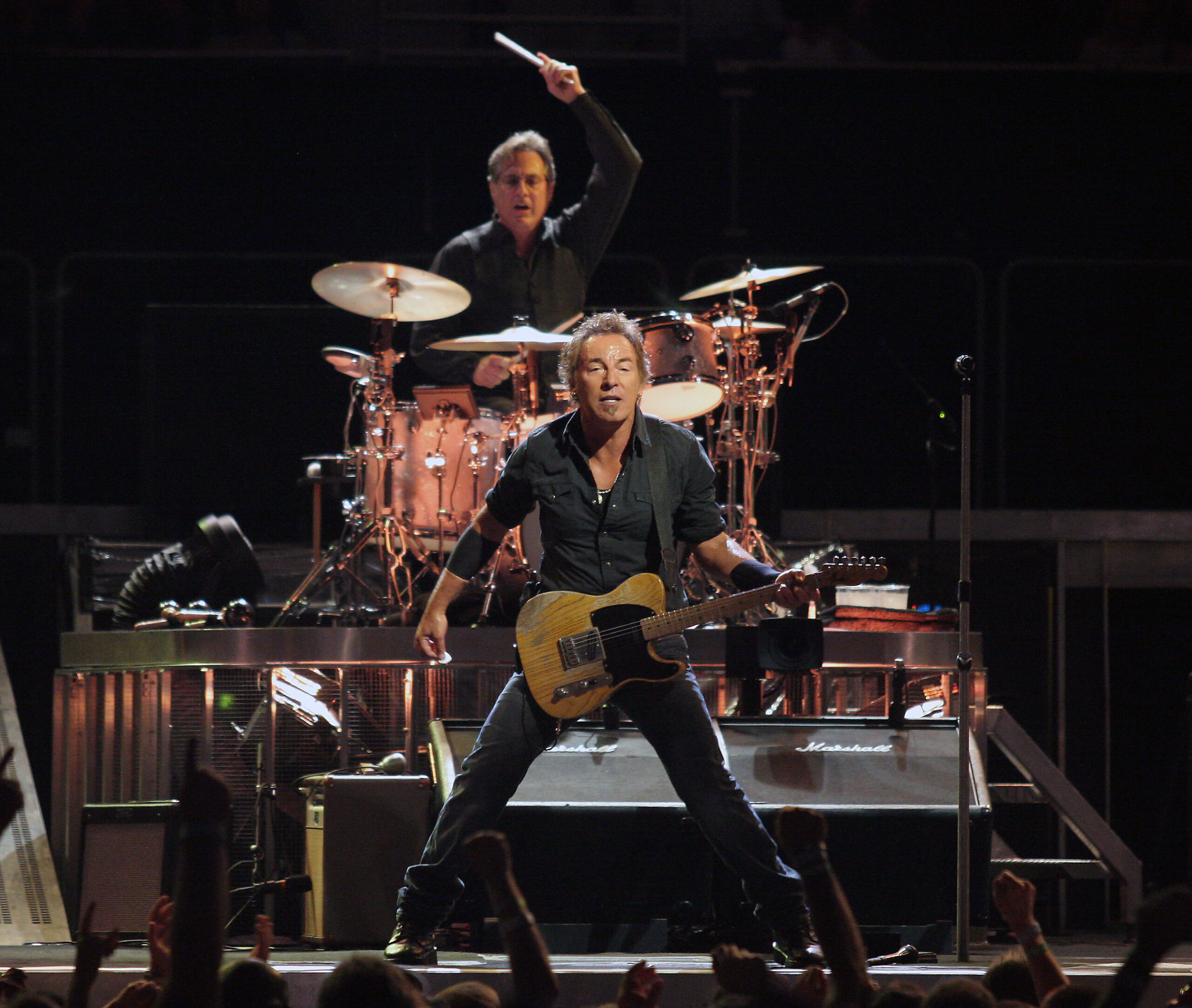
9. **Political Engagement, Super Bowl Glory, and Enduring Acclaim (2008-2011)**Bruce Springsteen’s vocal political engagement became even more pronounced during the 2008 presidential campaign, where he wholeheartedly supported Barack Obama. Throughout the year, he performed a series of powerful solo acoustic shows in support of Obama’s bid, culminating in a pivotal November 2 rally where he debuted the song “Working on a Dream” in a compelling duet with Patti Scialfa. Following Obama’s historic electoral victory on November 4, Springsteen’s iconic anthem “The Rising” was the very first song played over the loudspeakers in Chicago’s Grant Park after the President-elect’s victory speech. His involvement continued with a stirring performance of “The Rising” with an all-female choir, followed by a rendition of Woody Guthrie’s “This Land Is Your Land” with Pete Seeger, at the Obama Inaugural Celebration on January 18, 2009, an event attended by over 400,000 people, underscoring his role as a voice for the nation’s aspirations.
This period also brought significant recognition beyond the political arena. On January 11, 2009, Springsteen won the Golden Globe Award for Best Song for “The Wrestler,” from the acclaimed Darren Aronofsky film of the same name. Moved by a heartfelt letter from lead actor Mickey Rourke, Springsteen generously provided the song for the film without charge, demonstrating his artistic generosity and connection to compelling storytelling.
Perhaps one of the most unexpected yet exhilarating moments of this era came on February 1, 2009, when Springsteen performed at the halftime show of Super Bowl XLIII. This was a remarkable event, as he had declined previous invitations to perform at the highly coveted spectacle. A few days prior to the game, in what was reported as his first press conference in over 25 years, Springsteen promised a “twelve-minute party.” His electrifying 12-minute 45-second set, backed by the E Street Band and the Miami Horns, featured abbreviated, high-energy renditions of “Tenth Avenue Freeze-Out,” “Born to Run,” “Working on a Dream,” and “Glory Days,” the latter cleverly updated with football references. The intensity of these appearances and promotional activities prompted Springsteen to reflect, “This has probably been the busiest month of my life.”
The album *Working on a Dream*, dedicated to the late Danny Federici, was released in late January 2009, further solidifying the material featured in his recent performances. The subsequent *Working on a Dream Tour* ran from April to November 2009, offering fans across the globe a chance to experience the revitalized E Street Band. The tour included five final shows at the legendary Giants Stadium, opening with a new song, “Wrecking Ball,” a powerful tribute to the historic venue and Springsteen’s deep Jersey roots. This period concluded with significant honors, as Springsteen received the Kennedy Center Honors on December 6, 2009. President Obama delivered a poignant speech, affirming that Springsteen had woven the lives of ordinary Americans into his vast tapestry of songs, describing his concerts not merely as rock-and-roll shows but as “communions.” The event featured musical tributes from a diverse array of artists including Melissa Etheridge, Ben Harper, John Mellencamp, Jennifer Nettles, Sting, and Eddie Vedder. The 2000s concluded with Springsteen being named one of eight Artists of the Decade by Rolling Stone magazine, with his tours ranking him fourth among artists in total concert grosses for the decade, a testament to his enduring power and appeal. However, this triumphant period was shadowed by personal loss with the passing of Clarence Clemons, the E Street Band’s beloved saxophonist and founding member, on June 18, 2011, due to complications from a stroke.
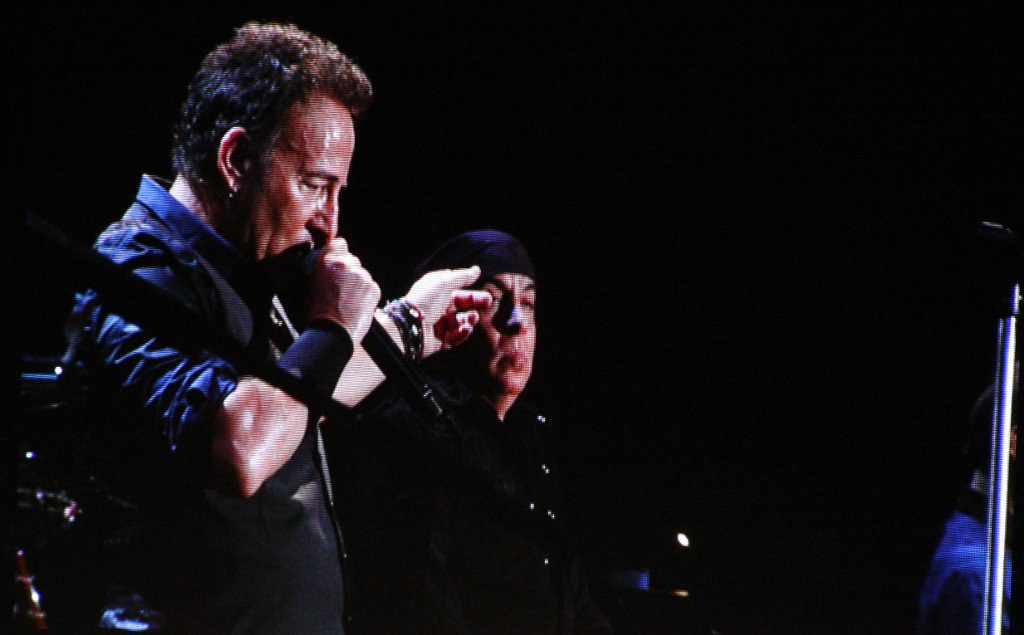
10. **Autobiography, Broadway Triumph, and Continued Creativity (2012-Present)**In the wake of profound loss, Bruce Springsteen continued to forge ahead, releasing his 17th studio album, *Wrecking Ball*, in March 2012. This album featured eleven tracks, including three previously only available as live versions: the title track “Wrecking Ball,” “Land of Hope and Dreams,” and “American Land,” offering them a definitive studio treatment. *Wrecking Ball* swiftly became Springsteen’s tenth No. 1 album in the U.S., a remarkable achievement that tied him with Elvis Presley for the third-most No. 1 albums of all time. The album was supported by the extensive *Wrecking Ball Tour*, which saw Springsteen performing his longest-ever concert in Helsinki, Finland, on July 31, 2012, a marathon four hours and six minutes featuring 33 songs, showcasing his legendary stamina and dedication to his craft.
Springsteen also continued his active involvement in the political landscape, campaigning tirelessly for President Barack Obama’s re-election in the 2012 presidential election. He appeared and performed at numerous Obama rallies across key states, including Ohio, Pittsburgh, Iowa, Virginia, and Wisconsin, delivering brief speeches and performing short acoustic sets that included a newly written song titled “Forward.” The *Wrecking Ball Tour* itself garnered significant industry recognition, named “Top Draw” by the Billboard Touring Awards for achieving the highest attendance of any tour that year. Financially, it ranked second only to Roger Waters’ tour, and Springsteen himself finished second only to Madonna as the top money maker of 2012, with an impressive $33.44 million. *Wrecking Ball*, along with its single “We Take Care of Our Own,” earned three Grammy Award nominations, including Best Rock Performance and Best Rock Song for the single, and Best Rock Album for the record. Rolling Stone, recognizing its profound impact, named *Wrecking Ball* the number one album of 2012 on their Top 50 list.
In late July 2013, the documentary *Springsteen & I*, directed by Baillie Walsh and produced by Ridley Scott, offered fans a unique, collaborative look at his enduring appeal, released simultaneously via a worldwide cinema broadcast. Springsteen’s creative output remained robust, with his eighteenth studio album, *High Hopes*, arriving in January 2014. The album featured a newly recorded version of the title track, which he had previously recorded in 1995, and was notable for being his first album comprised entirely of cover songs, newly recorded outtakes, or new versions of previously released material. The 2014 E Street Band touring lineup, including posthumous contributions from Clemons and Federici, appeared on the album. *High Hopes* became his eleventh No. 1 album in the US and his tenth No. 1 in the UK, tying him with rock legends The Rolling Stones and U2. Rolling Stone once again championed his work, naming *High Hopes* the second-best album of 2014.
Beyond music, Springsteen ventured into acting with his debut in the final episode of season three of Steven Van Zandt’s show *Lilyhammer*, an episode appropriately titled “Loose Ends” after one of his *Tracks* album songs. He continued to make notable appearances, performing “Land of Hope and Dreams” and “Born to Run” on the final episode of *The Daily Show with Jon Stewart* in August 2015. To commemorate the 35th anniversary of *The River*, *The Ties That Bind: The River Collection* box set was announced, released in December 2015, featuring four CDs (including unreleased songs) and three DVDs/Blu-rays, accompanied by a lavish 148-page coffee table book. Further demonstrating his cultural relevance, “American Skin (41 Shots)” was performed with John Legend at *Shining a Light: A Concert for Progress on Race in America* in November 2015, and he made his first *Saturday Night Live* appearance since 2002 in December of that year.
The *River Tour 2016* commenced in January 2016 in support of *The Ties That Bind* box set, with North American shows uniquely featuring an in-sequence performance of the entire *The River* album. Springsteen also took a firm stance on social issues, becoming one of the first artists to boycott North Carolina’s anti-transgender bathroom bill in April 2016. September 2016 saw the release of *Chapter and Verse*, a career-spanning compilation, alongside his highly anticipated 500-page autobiography, *Born to Run*, which quickly ascended to the top of The New York Times Best Sellers List. On September 7, 2016, at Citizens Bank Park in Philadelphia, Pennsylvania, he delivered his longest-ever U.S. show, clocking in at four hours and four minutes. The *River Tour 2016* was a monumental success, emerging as the top-grossing worldwide tour of 2016, pulling in $268.3 million globally. His political advocacy continued as he supported Hillary Clinton’s 2016 presidential campaign and was later honored with the Presidential Medal of Freedom by Barack Obama in November 2016. In January 2017, Springsteen and Scialfa performed a special acoustic set for Barack and Michelle Obama at the White House.
A truly unique chapter began with *Springsteen on Broadway*, an eight-week run at the Walter Kerr Theatre in New York City in fall 2017. The show blended readings from his *Born to Run* autobiography with other spoken reminiscences and musical performances. Originally planned for a limited engagement, its overwhelming popularity led to three extensions, with the final performance occurring on December 15, 2018. For this extraordinary production, Springsteen received a Special Tony Award in 2018. The live album *Springsteen on Broadway* was released in December 2018, charting in the top 10 in over 10 countries and reaching No. 11 in the United States.
His artistic journey continued into 2019 with his nineteenth studio album, *Western Stars*, released in June. A film adaptation of *Western Stars*, co-directed by Springsteen and longtime collaborator Thom Zimny, premiered at the Toronto Film Festival in September 2019, featuring Springsteen and his backing band performing the album’s music live. The film and its soundtrack, *Western Stars – Songs from the Film*, were released in October. In May 2020, during the COVID-19 pandemic, Springsteen made a remote appearance at a livestream concert by the Dropkick Murphys at Fenway Park, performing “Rose Tattoo” and “American Land” with Ken Casey, marking a significant early example of a major U.S. venue hosting a no-audience music performance, attracting over 9 million viewers and raising substantial charitable donations.
October 2020 saw the release of his twentieth studio album, *Letter to You*, accompanied by a black-and-white documentary directed by Thom Zimny. Supported by singles “Letter to You” and “Ghosts,” the album reached No. 2 in the U.S., making Springsteen the first artist to achieve a top-five album in six consecutive decades. His collaborative spirit endured as he was featured as a guest singer on Bleachers’ single “Chinatown” in November. In December 2020, Springsteen and the E Street Band, with Garry Tallent and Soozie Tyrell absent due to COVID-19 concerns, performed “Ghosts” and “I’ll See You in My Dreams” on *Saturday Night Live*, marking their first performance since 2017 to promote *Letter to You*. From the Elks Lodge to Broadway, from the intimate tales of Nebraska to anthems that filled stadiums and inspired political movements, Bruce Springsteen has remained a profound storyteller, an unwavering voice, and a towering figure whose art reflects the evolving American spirit, proving that the Boss’s narrative continues to be one of rock and roll’s most compelling sagas.

